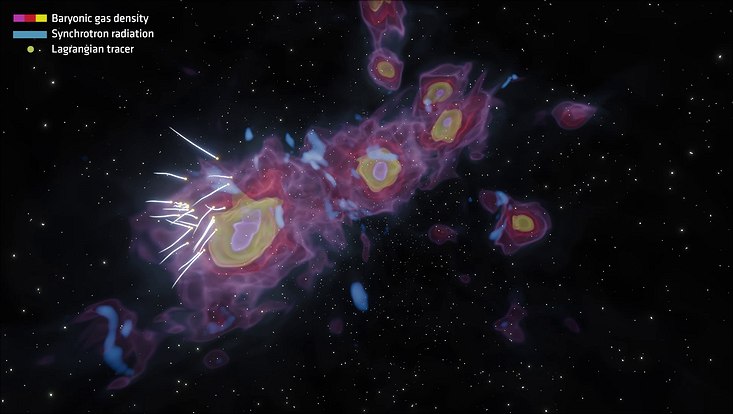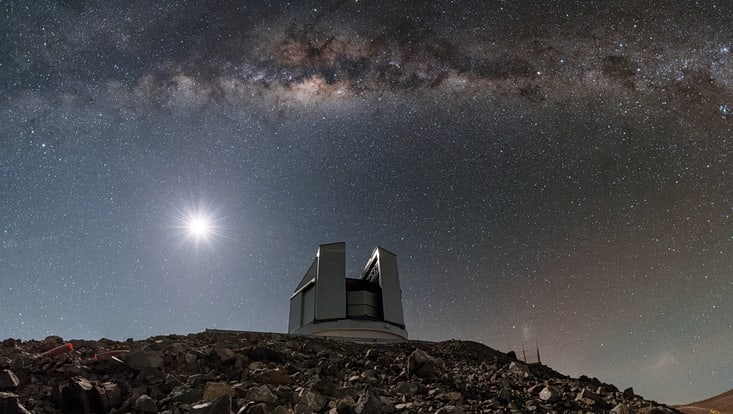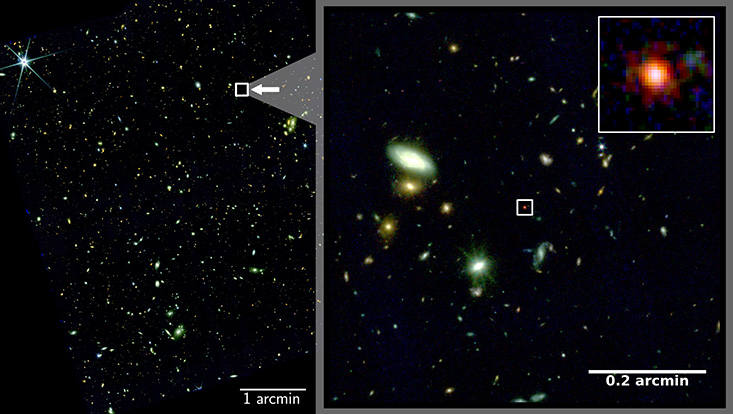1. Preis beim Image Contest des NRAO
7. Oktober 2020

Foto: NRAO
Ein internationales Forscherteam unter der Leitung von Giannandrea Ichingolo von der Universität Bologna hat bei einem Image Contest des National Radio Astronomy Observatory (NRAO) den 1. Preis gewonnen. Das Team, dem auch Forscher der Universität Hamburg angehören, hat einen erstaunlichen Beitrag eingereicht, in dem Beobachtungen der Radioastronomie mit kosmologischen Simulationen kombiniert wurden, um den Ursprung von Radiorelikten zu veranschaulichen.
While most of the scientific world was looking to Sweden for the announcement of the 2020 Nobel Prize in physics, a small group of astrophysicists was eagerly awaiting the results of the image contest hosted by the National Radio Astronomy Observatory’s (NRAO) as part of the 40th anniversary of the Karl G. Jansky Very Large Array (VLA).
The VLA is a radio telescope that is located 80 km west of Socorro, New Mexico, USA. Scientist from all around the world use the VLA to observe the sky at radio wavelengths which are invisible to the human eye, leading to new discoveries and a better understanding of the Universe. As part of the 40th anniversary of the VLA, the NRAO hosted a competition to search for the most compelling and high-quality radio astronomy visuals. The rules were simple: scientists could submit any type of data visuals such as: radio images, multi-wavelength images, animations, etc. The only requirement was that the visual must include radio data taken with the VLA.
Giannandrea Ichingolo from the University of Bologna and an international team, including members from the Hamburg Observatory, have participated in the contest. Using different visual and sound effects, the team combined VLA observations and cosmological simulations to illustrate the formation of radio relics.
Radio relics are large, up to six million light-years, arcs of radio emission that are located at the periphery of galaxy clusters. When galaxy clusters collide, large shock waves arise in the hot gas between the galaxies. These shock waves accelerate cosmic-ray electrons that thereafter emit radio emission in the vicinity of large-scale magnetic fields. Scientists use radio telescopes such as the VLA or Lofar to study these highly interesting objects. However, sophisticated computer simulations of these energetic events are required to connect the observations to the underlying theory.
Under the title “The VLA shedding light on the origin of cluster radio relics”, Giannandrea Ichingolo and his team have submitted their entry to the image contest that displays the formation of radio relics. The contribution compares a cosmological simulation of colliding galaxy clusters and VLA observations of real galaxy clusters. Denis Wittor from the University of Hamburg has studied in great detail the origin of shock waves and the subsequent formation of radio relics in the simulation. The observations of the real galaxy clusters were performed by Chiara Stuardi, who observed RXCJ1314.4-2515, and Kamlesh Rajpurohit, who studied the Toothbrush relic in 1RXS J0603.3+4214, both from the University of Bologna.
The contribution convinced the jury of the image contest, that “evaluated the entries for high visual impact that would make them compelling for public audiences” and judged the entries based “on their aesthetics and originality, artistic merit, scientific accuracy, and scientific significance.” Hence, the first prize was awarded to Giannandrea Ichingolo and his team, making them at least as proud and happy as this year’s Nobel Prize laureates.
Websites:
Image Contest: https://public.nrao.edu/news/2020-image-contest-winners/
Contribution: https://vimeo.com/464248944/3fc17a5b8b


